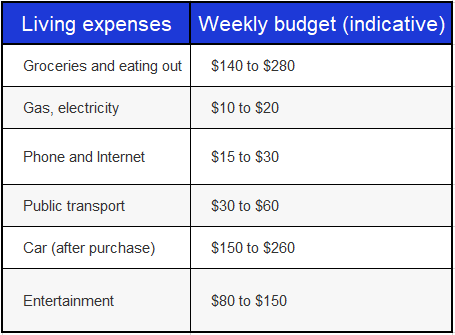Australia
Australia, also known as the Commonwealth of Australia, is a self-governing country consisting of the mainland of the Australian continent, Tasmania Island, and several smaller islands. With an extensive area of 7,617,930 square kilometers (2,941,300 sq mi), Australia is the largest country in Oceania and the sixth-largest in the world. It is also the oldest, flattest, and driest inhabited continent, with less fertile soils.
However, its vast size provides a diverse range of landscapes and climates, including deserts in the center, tropical rainforests in the northeast, and mountain ranges in the southeast center.
Australia is a federal parliamentary constitutional monarchy, with six states and ten territories. Its population of approximately 26 million is mainly concentrated in the urban areas on the eastern seaboard. The capital of Australia is Canberra, while Sydney is the most populous city and financial center. Other major cities include Melbourne, Brisbane, Perth, and Adelaide.
The climate in Australia is influenced by its size and the hot, sinking air of the subtropical high-pressure belt. Due to its large geographical size, Australia experiences a wide range of climates. The majority of Australia is desert or semi-arid, with mild winters and less contrast between summer and winter temperatures than in the northern continents. However, the transition is more noticeable in alpine regions and elevated areas. Despite this, seasonal highs and lows can still be significant. Temperatures in Australia have ranged from above 53 °C (127 °F) to -23.0 °C (-9.4 °F), but minimum temperatures are moderated.
Top Universities to study in Australia
When deciding which university to study at, it is crucial that you also look at the world university rankings.
QS Ranking of Australian Universities

Top courses to study in Australia
Here’s a list of top courses that international students opt to pursue in Australia for higher education:
Engineering
Business
Analytics
MBA
Life Sciences
Artificial Intelligence
(AI)
Social
Sciences
Medicine
Intakes in Australia
Unlike a single intake in Indian universities, Australian colleges and universities offer two major intakes. In some universities, intakes may also be referred to as a semester. The two intakes available in Australia are:
Semester 1
Starts late February/early March to late May/early June
Semester 2:
Starts late July/early August through to November
English language requirements
If you wish to obtain an Australian student visa, you must demonstrate proficiency in the English language. Typically, this involves passing a secure English language test to showcase your communication and correspondence skills.
The International English Language Testing System (IELTS) is the most widely used high-stakes English language proficiency test for study, work, and migration. In the past year alone, over three million tests have been administered. IELTS results are recognized by more than 10,000 organizations in 140 countries worldwide, including educational institutions, employers, professional associations, and governments.
While the minimum IELTS score required for a student visa is 5.5, you should aim for a higher score to gain admission to top universities. Additionally, the IELTS requirement may vary depending on the course you are interested in. For example, courses such as Business, IT, and Engineering typically require a score of 6.5, while Nursing, Physiotherapy, and Teaching may require a score of 7.0 or higher. It is advisable to seek expert advice on the score you should aim for and how to prepare for the test. IDP’s international education specialists are available to provide valuable insights in this area.
Cost of studying in Australia
Your expenditure on tuition fees depends on the type of qualification and the university or school you opt for. For instance, veterinary and medical degrees cost substantially more than other degrees. The average tuition fees at one of Australia’s tertiary institutions range between AUD 20,000 and AUD 30,000 a year.

Cost of living in Australia
Australia is considered one of the top countries in the world in terms of GDP, education system, and purchasing power parity index. Its high level of income is complemented by excellent health awareness, medical facilities, and political stability. This makes Australia an exciting place to be.
You should also consider these common expenses when creating your budget:

Job prospects in Australia
Did you know that you can cut down your cost of living and gain work experience while pursuing your study program in Australia? Thanks to Australian laws, working part-time on a student visa for up to 40 hours every two weeks is permitted.
Student visa requirements for the AUSTRALIA
Documents required for an Australian student visa
When applying for your student visa to study in Australia, you will generally need:
- Proof of enrolment (your electronic confirmation of enrolment eCOE)
- A valid passport
- Your visa application fee
- Your Genuine Temporary Entrant (GTE) statement
- Academic and work experience documents
- Evidence of your English proficiency skills (such as IELTS test scores)
- Evidence of financial ability (tuition fees, living expenses, expenses for dependents, return airfare)
- Details of your health insurance policy (OSHC)
- Passport-sized photographs
If you are under 18 years of age, you will also need to provide additional documents such as parental consent.
